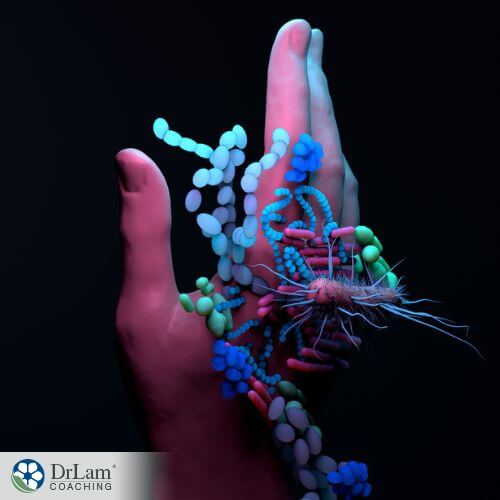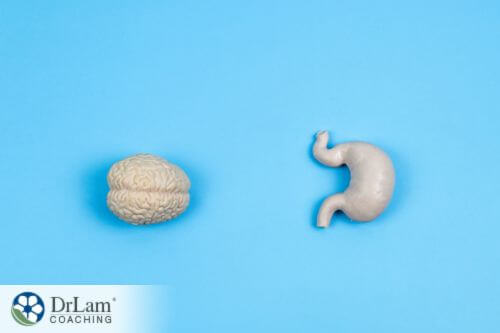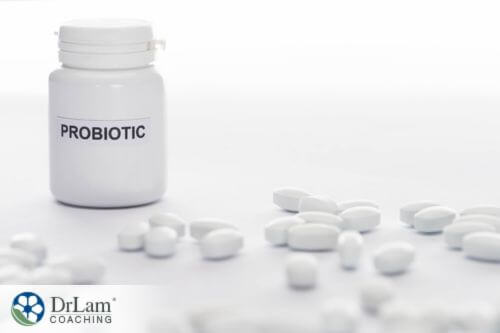 As many cells as the human body contains, it has over ten times that number of microbes. The body’s genetic material is largely made up of microbes and not the human genome. These microbes are comprised of fungi, viruses, and bacteria that inhabit the body, making it its habitat. As such, this creates a balanced ecosystem called the microbiome, located in your mouth, on your skin, and inside your gut. Importantly, this “gut-brain-skin axis” is crucial in maintaining your health and the health of each other. These three systems affect each other, and here you’ll learn how.
As many cells as the human body contains, it has over ten times that number of microbes. The body’s genetic material is largely made up of microbes and not the human genome. These microbes are comprised of fungi, viruses, and bacteria that inhabit the body, making it its habitat. As such, this creates a balanced ecosystem called the microbiome, located in your mouth, on your skin, and inside your gut. Importantly, this “gut-brain-skin axis” is crucial in maintaining your health and the health of each other. These three systems affect each other, and here you’ll learn how.
The NeuroEndoMetabolic (NEM) stress response is responsible for handling stress. It encompasses six sets of related organ systems, which are sometimes referred to as circuits. Each circuit has different organs and systems that play a role in counteracting stress. Also, these circuits work together, and if something is wrong with one circuit, it impacts the others. As such, all the circuits need to be in order for the body’s NEM stress response to be effective.
Within the NEM stress response are two circuits that greatly affect cognition, immune function, and mood— the Neuroaffect circuit (autonomic nervous system, central nervous system, and gut) and the Inflammatory circuit (gut, microbiome, and immune system). Inflammation is how the body responds to stress. The neuroaffective and inflammatory responses are involved in four interconnected components. These are the gut, brain, skin, and microbiome—forming the gut-brain-skin axis.
The Inflammation circuit is regulated by the immune system, gastrointestinal tract, and microbiome, which helps to control inflammation in your body. However, when the inflammation circuit becomes imbalanced, inflammation gets out of control and leads to new issues.
For those with Adrenal Fatigue Syndrome (AFS), its related chronic stress can often lead to dysbiosis or unbalanced gut flora. This can lead to inflammation and, as a result, other health issues. AFS patients tend to have low energy and the gut typically slows down to save energy. This leaves food in the stomach longer and causes inflammation.
It’s important to remember that the skin is an organ. In terms of function, it’s a protective cover for the organs of the body. Also, the health of the skin is dependent on other bodily systems, in particular, the gut/skin axis - the relationship that exists between the skin and the gut.
Numerous microbes are found in the gut and on the skin - some good and some bad - and they interact to keep the microbiome balanced. Additionally, the gut communicates with other systems and organs. In the case of an imbalance, inflammation usually develops. However, chronic, and not acute, inflammation is the real problem. Skin issues can arise as a result of inflammation, and as such, the skin serves as a visible indication that something isn’t quite right with your body on the inside.
Studies show, for instance, that the stress hormone cortisol appears to alter the makeup of the gut microbiota and blood levels of neuroendocrine molecules in the brain, like serotonin. Ultimately, this impacts the skin barrier and skin inflammation.
 Also, brain functions are influenced by gut flora which makes up the microbiome. As a result, it impacts your emotions, memory, and thoughts. The majority of the body’s neurotransmitters are made in the gut. The establishment and maintenance of homeostasis are supported by signals that travel between the brain and the gastrointestinal (GI) tract.
Also, brain functions are influenced by gut flora which makes up the microbiome. As a result, it impacts your emotions, memory, and thoughts. The majority of the body’s neurotransmitters are made in the gut. The establishment and maintenance of homeostasis are supported by signals that travel between the brain and the gastrointestinal (GI) tract.
Gut microbes interact with the brain through the vagus nerve and a network of nerves that encircle the gut, through the circulation of immune cells in the gut, or through metabolite molecules, produced by gut microbes. The connection between the gut and the brain is controlled by the central and enteric nervous systems. A dysfunction in any of the systems affects how the body responds to stress.
As such, an unbalanced gut flora leads to inflammation that has the potential to impact the skin and also affects neuron signaling between the gut and the brain.
The skin microbiome is an integral part of the gut-skin-brain axis, being that the skin microbiome is comprised of bacteria, fungi, and viruses that live on the top layer of the skin. When you experience skin inflammation, there is often a connection to the gut-skin-brain axis. The gastrointestinal system can be thrown off balance by hormones, poor dietary habits, and stress. This can lead to changes in the skin and even skin disease.
Based on research findings, the gut-brain-skin axis has been implicated in specific skin diseases like acne and atopic dermatitis. One observation by researchers is that acne and gut dysbiosis (unbalanced gut flora) are connected to substance P activity. Substance P is a neurotransmitter and neuromodulator of the central and peripheral nervous systems. According to studies, it triggers several pro-inflammatory mediators, such as IL-1, IL-6, TNF-α, and PPAR-γ, that are linked to acne development.
There appears to be a link between the gut-brain-skin axis and atopic dermatitis. Studies suggest that if your gut microbiota is altered, this may change the production of various neurotransmitters and neuromodulators. This could, in turn, affect how the skin barrier functions, and also impact immune system function. These two factors are key aspects of the changes that occur that contribute to atopic dermatitis.
Gut-brain-skin axis health can be supported with diet changes and supplements to a certain degree. Your daily diet plays a crucial role in the amount of each type of bacteria and the diversity of gut flora. The aim should always be to boost the good bacteria in the gut and minimize the bad ones.
Bacteroidetes are essential for producing short-chain fatty acids (SCFAs), which are beneficial in regulating gut inflammation. You can boost Bacteroidetes in your gut by eating a healthy diet consisting of a variety of green leafy vegetables, fruits, and whole grains. This will help to increase its population. Furthermore, an ample amount of SCFAs is beneficial for reducing intestinal pH and preventing the growth of particularly pathogenic bacteria, like E.coli and Enterobacteriaceae.
Studies indicate that dietary patterns that emphasize plant-based foods favorably alter the gut microbiome. Accordingly, a balanced diet that limits red meat and focuses more on vegan and vegetarian food options increases the phylogenetic diversity of the gut flora.
When it comes to promoting the health of the gut-brain-skin axis, three food components are particularly beneficial to add to your diet.
Your gut-brain-skin axis can be supported with the use of certain supplements. It’s important that the gut and skin microbiomes remain balanced since both are important for your health. Remember to always consult with your physician before taking any supplements.
Some supplements to consider include:
Prebiotics are foods that also feed the growth of beneficial bacteria in the gut. Focus on prebiotic supplements that contain fructooligosaccharides (FOS) or xylooligosaccharides (XOS). Specifically, one of the main benefits of XOS supplements is that they are highly effective when taken in small doses.
 Probiotic supplements are a great option to use to heal your gut and restore a good balance of beneficial bacteria in your gut. There are different probiotic products with varying species and strains to consider. As such, look for a high-quality probiotic product that contains strains of lactobacilli, bifidobacteria, and Bacillus subtilis in spore form, as well as other beneficial bacterial species. Be sure to store it properly and pay attention to the expiration date, as probiotics must be live to be effective.
Probiotic supplements are a great option to use to heal your gut and restore a good balance of beneficial bacteria in your gut. There are different probiotic products with varying species and strains to consider. As such, look for a high-quality probiotic product that contains strains of lactobacilli, bifidobacteria, and Bacillus subtilis in spore form, as well as other beneficial bacterial species. Be sure to store it properly and pay attention to the expiration date, as probiotics must be live to be effective.
This vital nutrient helps to fuel the gut’s epithelial cells, maintains the integrity of the gut’s mucosal lining, and keeps bacteria in the gut. Because glutamine supplements are a tasteless powder, you will have no issues adding them to your clear liquids or stirring them into your foods. If you rather take pills, then Dr. Lam's Glutamax tablets are a great way of getting L-glutamine as a supplement.
Omega-3 fatty acids in the form of fish oil can positively impact the gut microbiome. They act on the brain via the gut-brain axis to exert a positive effect. Specifically, omega-3 helps reduce inflammation and regulates the kind and abundance of gut microbes. It's best to take this nutrient in liquid form rather than gel capsules to maximize absorption. For those with adrenal fatigue, you can try Dr. Lam's Liquid OM-3.
When rebalancing your gut flora, you need to be cautious if your health is not at an optimal level.
It’s vital to maintain a balanced gut-brain-skin axis in order to ensure optimal health. Your body’s systems and organs are interconnected, and a problem with one can lead to an issue with another. If you are experiencing gut problems that are reflecting on your skin or in your mood, speak to your doctor. Get a proper assessment at your healthcare provider’s office to determine the exact cause of your gut-related issue.
If you are concerned about your symptoms and would like assistance in determining natural ways to alleviate them and restore balance to your gut, the team at Dr. Lam Coaching can help. We offer a free** no-obligation phone consultation at +1 (626) 571-1234 where we will privately discuss your symptoms and various options. You can also send us a question through our Ask The Doctor system by clicking here.
You can keep the gut-brain-skin axis healthy with dietary changes that include green leafy vegetables, fruits, whole grains, live probiotics, and fiber. You can also add supplements to your diet that can deliver beneficial bacteria and essential vitamins and minerals that the body needs.
